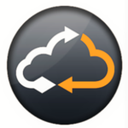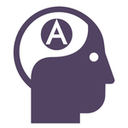Diagram software: purchase guide
Diagram Software in 2025: Turning Complexity Into Clarity
What Is Diagram Software
Diagram software empowers teams to visualize complex ideas, workflows, systems, and processes through intuitive visual representations. Whether you're mapping out a product roadmap, illustrating a user journey, outlining software architecture, or simplifying a business process, these tools make abstract thinking tangible.
In 2025, diagram software has evolved beyond basic flowcharts and static visuals. These platforms are now cloud-native, collaborative, and often powered by automation and smart features. They support real-time editing, version tracking, data integration, and even AI-powered layout optimization. Used by technical and non-technical teams alike, they help organizations communicate better and move faster.
Why Diagram Software Matters to Your Business
Every team deals with complexity—whether it's operational, technical, or strategic. Diagram software translates that complexity into clarity. It enables faster decision-making, more precise planning, and stronger alignment across departments. When ideas are mapped visually, misunderstandings shrink and productivity grows.
For businesses, diagrams serve as a shared language between developers, project managers, designers, marketers, and executives. Instead of long documents or unclear slide decks, a single diagram can tell the whole story—clearly and quickly. This is essential not only for internal alignment but also for stakeholder communication and client-facing documentation.
In an age of remote work and distributed teams, having a centralized, collaborative space to build and share diagrams isn’t just helpful—it’s critical. Whether you're building apps, optimizing logistics, or designing content strategies, diagram software keeps your ideas organized and your teams connected.
How to Choose the Right Diagram Software
Choosing the right diagram software starts with understanding what kind of visuals your team actually needs to create. Some platforms focus on technical diagrams like UML, ERD, or BPMN, while others are geared toward infographics or concept maps. Identifying whether you're visualizing backend systems or marketing funnels will help narrow the field.
Once your needs are clear, look at collaboration features. Modern teams don’t work alone, and diagramming shouldn’t either. Software that supports real-time co-editing, version history, and integrated commenting is essential for fast-paced, multi-team projects. You also want to ensure that the tool fits into your workflow ecosystem—this means easy integration with your cloud storage, documentation tools, and productivity platforms.
Templates and smart features are another key consideration. The best tools help you start faster, finish quicker, and stay consistent by offering shape libraries, auto-alignment, and drag-and-drop logic. And while ease of use matters, don’t sacrifice depth—your tool should grow with your team, supporting more complex diagrams as your processes evolve.
Finally, think about long-term usability and support. Good software should be well-documented, intuitive for first-time users, and powerful enough for advanced needs. And of course, a strong support team or user community is a bonus when your team needs guidance or inspiration.
How to Implement Diagram Software Successfully
Implementing diagram software begins with building a culture of visual thinking. Start by encouraging teams to use diagrams in meetings, documentation, and strategy sessions. This reinforces the value of visuals in everyday work and reduces the reliance on text-heavy communication.
Standardizing your visual language helps teams work together more efficiently. Establish internal guidelines around icons, shapes, flow logic, and labels so that everyone speaks the same visual “dialect.” This makes your diagrams clearer and easier to interpret across departments.
Training and onboarding are equally important. Even simple tools can seem intimidating without the right context. Providing examples, templates, and mini-tutorials can accelerate adoption and empower non-technical users to create their own diagrams confidently.
Finally, integrate diagramming into your toolchain. Embed diagrams into project management platforms, link them to documentation, and use them in stakeholder presentations. A good diagram isn't just a file—it’s a shared asset that drives alignment and action.
Best Diagram Software in 2025
| Software |
Key Features |
Pricing |
Trial & Demo |
Best For |
| GenMyModel |
Cloud-based modeling, UML support, real-time collaboration |
Pricing on request |
✅ Free version
✅ Free trial
✅ Free demo |
Developers and system architects |
| Adioma |
Infographic creation, storytelling templates, visual data structuring |
Pricing on request |
✅ Free version
✅ Free trial
✅ Free demo |
Marketers, educators, content teams |
| eVSM |
Process mapping, simulation tools, optimization for lean workflows |
Pricing on request |
✅ Free version
✅ Free trial
✅ Free demo |
Process improvement and operational teams |
| Diagrams.net |
Drag-and-drop builder, large template library, cloud and offline access |
Pricing on request |
✅ Free version
✅ Free trial
✅ Free demo |
Teams needing an all-purpose, flexible diagramming tool |
2025 Trends in Diagram Software: What’s Shaping the Future
The biggest shift in 2025 is toward diagrams that are dynamic rather than static. Teams are no longer content with visuals that only represent a snapshot in time. Instead, they want diagrams connected to live data—updating in real time, embedded in dashboards, or even interacting with APIs. Whether you're mapping a customer journey or illustrating an infrastructure system, real-time context is becoming the norm.
Artificial intelligence is also making waves in diagram creation. Smart layout suggestions, automated flow generation, and natural language inputs are turning traditional diagramming into a guided experience. AI now helps you build faster, cleaner, and more effective diagrams—without needing to drag a single box.
Another notable trend is the democratization of diagramming. What used to be the domain of business analysts or IT architects is now accessible to marketers, HR, and even sales teams. Platforms are investing in user-friendly interfaces, mobile accessibility, and team-wide collaboration features that lower the barrier to entry and encourage organization-wide adoption.
Brand customization and integration flexibility are also key. As diagrams become part of external presentations and client deliverables, teams want tools that align with their brand identity and work seamlessly with existing documentation tools. Being able to export, embed, and collaborate across platforms is no longer a luxury—it’s expected.
Conclusion
Diagram software has become a strategic asset for teams that want to think clearly, communicate better, and operate with greater agility. In 2025, these tools are no longer just for visual learners or design professionals—they’re essential for every business that deals with systems, processes, and ideas.
Whether you're scaling a startup or optimizing a global enterprise, the right diagram software will help you align teams, unlock insight, and move faster with confidence. And as diagrams become more intelligent, interactive, and integrated, they’re no longer just visuals—they're how work gets done.






